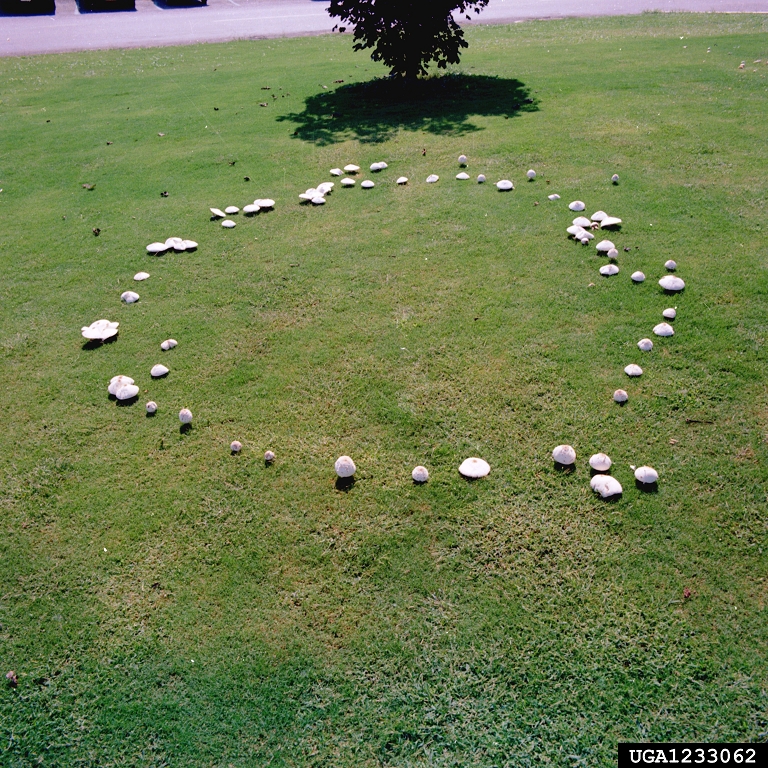Is There Something Magical Going on in My Lawn?
Over the years, I have occasionally received inquiries about dark green, circular bands in home lawns known as fairy rings. Occasionally, mushrooms appear from the ring. While they can present problems for golf courses and other professional turf managers, in the home lawn, this condition is usually inconsequential.
Why the name “fairy ring,” and are they magical?
As legend goes, fairies gather at night, dance in a circle, and dribble their fairy dust. Wherever the fairy dust lands, that is where the mushrooms pop up. An Irishman once said that if you jump into the middle of a fairy ring, you would disappear. He then said with the sincerest face, “Obviously, I never jumped into the middle of one, because I am still here!”
Richard Latin, Professor of Plant Pathology at Purdue University, authored a Purdue Extension publication about the phenomenon known as a fairy ring.
“Fairy rings are dark green circular bands in turf,” he said. “They may be less than one foot to more than 100 feet in diameter.” He said sometimes they appear as arcs or incomplete circles, and may result in bands of dead turf. The rings are more prevalent in dry soils, during dry months in summer and fall. “After extended periods of precipitation, mushrooms (of all sorts) may be associated with some fairy rings,” he said. Mushrooms are the fruiting bodies of fungi.
Don’t eat the mushrooms – they are likely poisonous. Paul Pugliese, Agriculture and Natural Resources County Extension Agent for University of Georgia Extension, wrote about fairy ring mushrooms. He said that mushrooms can be concerning if you have small children or pets that might accidentally eat them. “Discourage children and pets from eating mushrooms as they may be poisonous,” he said.
He added that the majority of mushrooms might not be lethal, but could cause severe gastrointestinal distress. If mushrooms are problematic, consider raking or hand removing the mushrooms with gloves and disposing in the garbage.
“Rings develop as the fungi grow radially through soil and thatch, breaking down organic matter,” Latin said. “The breakdown releases ammonium, which is further reduced by other microorganisms to nitrate.” The nitrate simulates growth ahead of the leading edge of the ring, producing darker green rings of turf.
“The appearance of fairy rings on high-maintenance golf greens, sports turf, and manicured landscapes is often unacceptable, even though the symptoms are largely cosmetic and result in no lasting turf damage,” he said.
“Sometimes fairy ring activity kills turfgrass plants, and in those areas new growth is very difficult to re-establish,” Latin said. “Colonization of soils by fairy ring fungi may contribute to ‘localized dry spot,’ a condition that is a serious concern on golf greens.”
“Homeowners who manage their own lawns should try to engage in peaceful coexistence with fairy rings,” he said. “Although the rings will normally appear in the same place year after year, they may be barely visible and hardly a concern in some years.”
“The simplest means of managing fairy rings is to use additional N fertilizer (spoon feed 0.1 – 0.25 lb. per 1,000 sq. ft.) in the areas where rings occur to mask the dark green bands,” he said. Regular mowing should continue.
For professional turf managers, there are fungicide and fumigation options. Most homeowners can elect the light fertilization option or a “no action” approach.
For more information, access Latin’s publication “Fairy Ring” at Purdue’s Education Store, https://edustore.purdue.edu.

